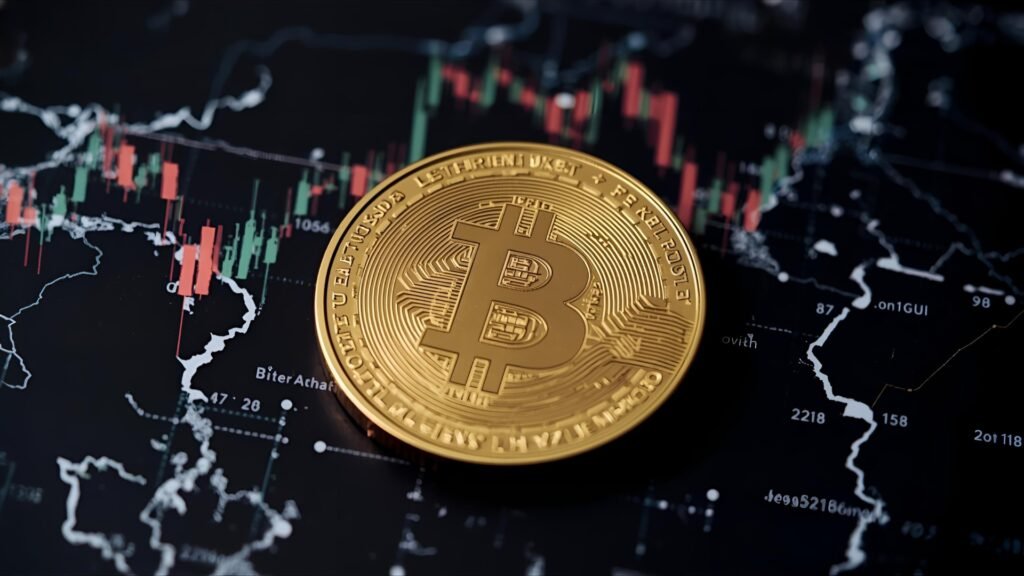The phrase Ethereum price forecast turns up whenever crypto investors start planning for the next cycle. It’s a deceptively simple question that depends on many moving parts: macroeconomics, network fundamentals, on-chain activity, regulation, and good old market sentiment. Ethereum is more than a token; it’s a programmable settlement layer powering DeFi, NFTs, layer-2 rollups, and a growing stack of real-world applications. That breadth gives ETH multiple demand streams and a complex valuation puzzle, which is exactly why a thorough ethereum price forecast needs more than a single number.
In this guide, you’ll get a structured framework for thinking about ETH’s price path over the next several years. We’ll dig into fundamentals like EIP-1559 burn, validator dynamics after the Merge, rollup adoption, and total value locked. We’ll connect those to macro drivers such as liquidity cycles, interest rates, and Bitcoin’s halving effects. Then we’ll outline bear, base, and bull scenarios for 2025–2030, including what would have to happen for each path to play out. Finally, we’ll close with practical strategy notes and FAQs so you can translate a research-heavy ethereum price forecast into real-world decisions without falling into over-optimization or hype.
The Fundamentals Behind Any Ethereum Price Forecast
A reliable ethereum price forecast begins by understanding value drivers. Ethereum’s unique economics post-Merge blend fee burn and staking rewards, framing ETH as both a productive asset and a scarce commodity.
Supply Dynamics: Issuance, Burn, and Net Inflation
After Ethereum transitioned to proof-of-stake, block rewards fell dramatically versus the old proof-of-work system. Meanwhile, EIP-1559 continues to burn a portion of transaction fees. When on-chain activity is strong, the burn can offset or exceed issuance, making ETH net deflationary over stretches of time. A credible Ethereum price forecast must therefore model: Baseline issuance tied to total ETH staked and validator participation.
Burn rates that scale with network usage, gas demand, and L2 settlement. Net supply growth under low, medium, and high activity regimes. When activity migrates to layer-2 networks like Arbitrum, Optimism, Base, zkSync, and Polygon, the base layer still captures fees through calldata and settlement, sustaining burn even as per-transaction costs drop for users.
Demand Drivers: Utility, Security Budget, and Collateral
ETH isn’t just a medium of exchange; it’s the native collateral of the Ethereum economy. Demand surges when: DeFi protocols expand borrowing capacity and TVL rises. NFT and gaming cycles attract retail flows. Institutional interest grows, including custody,
ETH staking products and potential exchange-traded vehicles in major markets. Developers push new use cases that settle on L2s while anchoring to L1 security. A nuanced Ethereum price forecast maps these demand streams to transaction volume, fee pressure, and staking participation—ultimately, to free cash flow proxies such as burn and net issuance.
The Rollup-Centric Roadmap
Ethereum’s scaling vision revolves around L2 rollups, data availability improvements (e.g., danksharding/Proto-Danksharding), and faster settlement. As L2 throughput climbs, more economic activity can clear the chain while maintaining security.
Over the medium term, this can expand fee revenue—thus burn—even as user fees fall on L2s. Any long-range Ethereum price forecast should assume rising rollup adoption and ask how that changes gas markets, MEV extraction, and validator rewards.
Macro Matters: Liquidity, Rates, and the Crypto Risk Curve

No ethereum price forecast survives without accounting for the macro cycle. Crypto tends to be a liquidity-sensitive asset class. When global financial conditions ease—lower real rates, central-bank balance sheet stabilization, and risk-on sentiment—capital often flows down the risk curve from Bitcoin into large-cap alts like ETH, and then to smaller assets.
Bitcoin’s Halving and the ETH/BTC Rotation
Bitcoin’s supply-shock narrative often kickstarts broader crypto rallies. Historically, as Bitcoin confronts new highs, capital later rotates into ETH. For an Ethereum price forecast, the timing of this rotation matters. If Bitcoin dominance remains elevated deep into the cycle, ETH’s catch-up can be forceful but delayed. If dominance fades earlier, ETH may lead on risk appetite, accelerating the ETH/BTC ratio.
Regulation and Institutional Access
Another macro lever is the regulatory environment. Clearer guidance on staking, custody, and spot ETH products can expand institutional participation. Conversely, restrictive rulings or uncertain classification can dampen flows. A credible ethereum price forecast doesn’t take regulatory wins for granted; it assigns probabilities and builds scenarios accordingly.
On-Chain Health Checks: Metrics To Watch
Forecasts aren’t set-and-forget; they’re living models. For a current Ethereum price forecast, keep a running dashboard of on-chain metrics:
Active Addresses, Fees, and Burn
Sustained increases in daily fees, even after rollup adoption, signal sticky demand. Rising burn paired with steady issuance is a constructive backdrop. Watch the 30-, 90-, and 180-day averages to filter noise.
Staking Participation and Liquidity
The percentage of ETH staked influences circulating supply and selling pressure. High-stakes participation can be bullish for price by reducing float, but it also changes liquidity dynamics. The staking yield itself is a function of fees, MEV, and issuance; when yields compress, marginal staking demand may slow.
DeFi TVL and Stablecoin Float
TVL growth across leading L2s and L1 protocols is a practical proxy for real economic activity. A rising stablecoin float on Ethereum indicates fresh capital arriving; sticky, organic growth is more meaningful than short-lived incentive spikes.
L2 Throughput and Cost per Transaction
Transaction counts and cost trends on Optimism, Arbitrum, Base, and zk-rollups showcase the health of Ethereum’s scaling stack. If throughput lifts while average user costs fall and L1 fee revenue remains resilient through settlement, the long-term ethereum price forecast strengthens.
Technicals: Mapping Cycles Without fortune-telling
While fundamentals explain “why,” technicals often guide “when.” A disciplined ethereum price forecast integrates both.
Trend Structure and Moving Averages
Weekly and monthly moving averages help track regime changes. Sustained closes above multi-month moving averages typically confirm risk-on conditions. On the downside, losing those levels can signal a cyclical pause or deeper correction.
Market Structure, Liquidity Pools, and Support/Resistance
ETH often gravitates toward areas of high historical volume. Prior cycle highs, breakout retests, and consolidation shelves become meaningful support and resistance. A durable ethereum price forecast acknowledges these levels as path-dependent checkpoints rather than immutable laws.
Momentum and Mean Reversion
Indicators like RSI highlight overheating. In fast-moving uptrends, shallow retracements to rising moving averages can be constructive. In distributive phases, failed breakouts and lower highs warn that the forecast should shift defensive.
Scenario Analysis: A Structured Ethereum Price Forecast (2025–2030)
Rather than anchoring to a single target, the most useful ethereum price forecast frames a set of scenarios with catalysts and tripwires. Think in terms of probabilities and thresholds that would prompt you to upgrade or downgrade the path.
2025 Scenarios
Base Case: The market transitions from a Bitcoin-led advance to broader participation. L2 activity scales, fees and burn remain healthy, and regulatory clarity gradually improves in major jurisdictions. DeFi and real-world asset tokenization add steady—if unspectacular—demand. In this environment, ETH grinds higher with periodic 20–35% corrections typical of crypto uptrends. The ethereum price forecast in a base path expects new cycle highs with breadth across L2 ecosystems and a constructive ETH/BTC rotation by mid-to-late year.
Bull Case: A strong liquidity backdrop and decisive institutional access trigger outsized flows into ETH, staking products, and L2 tokens. The burn outpaces issuance for extended periods, on-chain fee revenue stays robust even as L2s get cheaper, and the application layer finds a breakout use case beyond speculation—perhaps payments via account abstraction or mainstream gaming. Under these conditions, the ethereum price forecast points to a powerful extension rally, historically consistent with crypto’s tendency to overshoot before settling into a new range.
Bear Case: Risk assets struggle as rates re-price higher or growth weakens. Regulatory setbacks delay institutional adoption and discourage staking participation. On-chain activity softens, making ETH modestly inflationary at times. In this scenario, the ethereum price forecast favors a choppy, range-bound market with underperformance versus Bitcoin.
2026–2027 Scenarios
Base Case: The network continues implementing the rollup-centric roadmap. Data availability improvements reduce L2 costs further while preserving L1 settlement demand. Real-world asset issuance and institutional DeFi become steadier components of activity. The ethereum price forecast projects sustainable, multi-quarter expansions punctuated by normal crypto drawdowns. Valuation anchors around fee metrics and long-term holders’ cost basis.
Bull Case: Ethereum consolidates its role as the default settlement layer for permissionless finance, attracting enterprise pilots that graduate to production. If regulatory clarity turns favorable, new capital pipelines open for tokenized funds and programmable securities. ETH becomes a macro-relevant collateral asset and a preferred yield instrument via staking. In this path, the forecast envisions higher highs with improving quality of earnings—burn/fees less dependent on speculative manias.
Bear Case: Execution risks materialize. If L2 composability plateaus, UX remains clunky, or security incidents erode trust, activity could scatter to competing ecosystems. A macro downturn could compress risk premia across crypto. That would shift the ethereum price forecast to defense, emphasizing capital preservation, lower beta exposure, and opportunistic accumulation only at multi-year supports.
2028–2030 Scenarios
Beyond the next cycle, forecasting is less about precision and more about contingency planning. Over this horizon, two questions dominate:
-
Does Ethereum own the modular stack—settlement, data availability, and rollups—at a scale that captures the majority of permissionless finance?
-
Does the application layer deliver everyday utility that keeps users transacting even when token prices are boring?
If “yes,” the long-term ethereum price forecast supports structurally higher valuations anchored by persistent burn, mature staking markets, and broad institutional integration. If “no,” expect range-bound markets punctuated by speculative bursts, with valuation cycling around narratives rather than cash-flow proxies.
Can Break an Ethereum Price Forecast
Even a careful ethereum price forecast faces uncertainty. A clear-eyed risk register helps you react rather than predict.
Regulatory and Policy Shifts
Regulatory interpretation of staking rewards, custody, and token classification can flip sentiment quickly. Policy choices on stablecoins and exchange operations influence fiat on-ramps, liquidity, and price discovery.
Smart Contract and Security Incidents
Major protocol exploits, L2 bridge failures, or validator-layer issues can reduce activity and trigger risk aversion. A robust forecast treats security as a first-order variable, not an afterthought.
Competitive Pressure
Alternative L1s or app-chains can fragment liquidity. If developers migrate en masse due to incentives or technical advantages, Ethereum’s share of fee revenue may decline, altering burn assumptions embedded in your ethereum price forecast.
Macro Shocks
Tightening liquidity, growth scares, or geopolitical events can overwhelm crypto-native fundamentals. Keep macro hedges and scenario triggers in mind.
Also Read: Ethereum Price Forecast: Factors Affecting ETH’s Value in 2025
How to Build Your Own Ethereum Price Forecast Model

You don’t need to be a quant to maintain a useful ethereum price forecast. A lightweight model anchored in a few recurring inputs can keep you grounded.
Track the Supply Side
Build a simple sheet that tracks total ETH staked, estimated issuance, 30/90/180-day average fees, and burn. Use these to derive net supply growth under different usage bands. Update monthly to smooth noise.
Map Demand Proxies
Monitor L2 throughput, DeFi TVL, stablecoin float, and active addresses. Note regime shifts rather than day-to-day variability. Watch for divergences, such as rising price on falling activity or vice versa; these gaps often resolve with sharp moves.
Overlay Macro and Policy
Create a timeline for central bank decisions, major regulatory events, and crypto-specific catalysts like protocol upgrades. Your ethereum price forecast should flex around those dates with position sizing, not just price targets.
Define Price Regimes
Choose a handful of levels using weekly charts—prior highs, consolidation shelves, and moving average clusters. Assign scenario probabilities and tripwires: data points that, if hit, prompt you to upgrade or downgrade your base case.
Step 5: Review and Refine
Once per month, compare reality to your assumptions. If burn outpaced your estimate or staking jumped, adjust. A forecast is a living document; accuracy improves with iteration.
Strategy Notes: Turning a Forecast into Action
A research-backed ethereum price forecast is only as good as the decisions it informs. Consider converting insights into process, not predictions.
Time Horizons and Sizing
Long-term investors may prefer dollar-cost averaging with periodic rebalancing, letting network growth compound. Traders focus on trend confirmation and clear invalidation points. Either way, tie position size to volatility and risk tolerance rather than headline targets.
Staking and Liquidity
Staking can improve returns but introduces lockup or liquidity considerations, depending on your method. Align staking percentage with your need for flexibility. If your ethereum price forecast anticipates high volatility, you may want more liquid ETH on hand.
Diversification and Hedges
Even if ETH is your core conviction, diversification across high-quality L2s or crypto-adjacent assets can buffer drawdowns. For active traders, options hedges around macro events can soften tail risk.
Putting It All Together
The goal of any ethereum price forecast isn’t to guess the exact top or bottom. It’s to frame uncertainty, tie price action to fundamentals, and stay adaptive. If fees and burn climb while staking participation rises and L2 throughput expands, the base and bull trajectories gain probability. If regulatory setbacks, thinning liquidity, or security incidents dominate headlines, tighten risk and revisit assumptions. Over time, a repeatable, data-informed process will outperform hot takes.
Conclusion
Ethereum sits at the intersection of programmable money, global settlement, and a modular scaling stack that can support orders of magnitude more activity. That mix creates multiple demand channels for ETH—transaction fees, staking collateral, and financial primitives that need a neutral settlement asset.
A robust Ethereum price forecast recognizes that strength, but it also respects the volatility of a young asset class. By grounding your outlook in supply dynamics, burn trends, L2 adoption, and macro context, you can build scenarios that guide sensible decisions rather than wishful thinking. Forecasts will change; your process should not. Stay empirical, keep risk controls tight, and let the network’s actual progress—not only narratives—do the talking.
FAQs
What is the most important factor in an ethereum price forecast?
The single most important factor is sustained network demand that drives fees and EIP-1559 burn. When activity persists across DeFi, NFTs, and rollups—without relying solely on short-term incentives—ETH’s net supply can contract or grow slowly, improving long-term valuation. A strong ethereum price forecast starts with that relationship between usage and burn, and then layers on staking, issuance, and macro liquidity.
How do layer-2 rollups affect the forecast for ETH?
Rollups reduce user costs and expand throughput, which on the surface could lower L1 fees. But they still post data and settle to L1, contributing to fee revenue and burn. If L2 adoption soars while L1 retains settlement relevance, the medium-term ethereum price forecast improves because the network captures more economic activity overall, even if per-transaction fees fall at the user level.
Does staking change ETH’s price dynamics?
Yes. Staking reduces liquid float and creates a native yield, both of which can support price during quiet periods. However, if staking yields compress and alternative opportunities arise, marginal staking demand may ease. Good forecasts watch the ratio of staked ETH to circulating supply, expected yields, and withdrawal dynamics following major upgrades.
How should I incorporate macroeconomic conditions into my forecast?
Focus on liquidity and policy. Lower real rates, improving growth expectations, and constructive regulatory clarity tend to support risk assets. Map major policy dates and central bank meetings, then taper exposure into uncertainty if your ethereum price forecast relies on optimistic macro assumptions. Re-add risk when the data validates your scenario rather than pre-empting it.
Is it better to use a single price target or scenarios?
Scenarios are more resilient. A single number invites overconfidence and anchoring. By defining bear, base, and bull paths with clear catalysts and invalidations, your ethereum price forecast becomes a decision framework. As new data arrives—on-chain activity, fees, staking, regulation—you can shift probability weightings without abandoning discipline.

